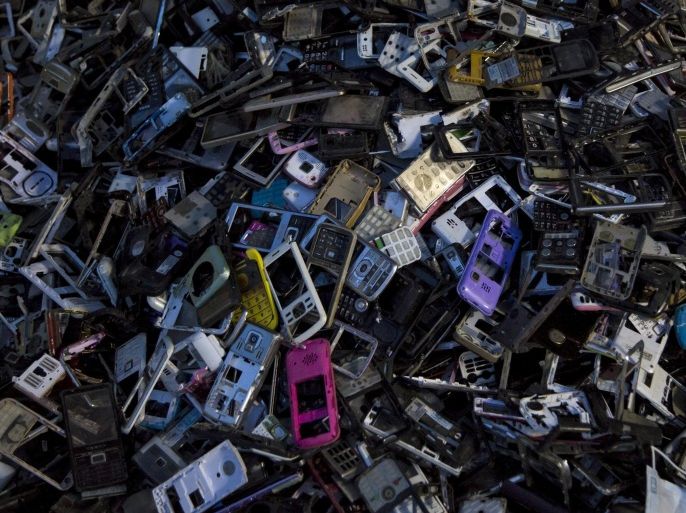أوروبا تفشل في إعادة تدوير المخلفات الإلكترونية

أظهرت دراسة أن ثلثين فقط من المخلفات الإلكترونية في أوروبا يتم إعادة تدويرهما بطريقة ملائمة، في حين يتم الاتجار في أعداد كبيرة من الهواتف المحمولة وأجهزة الحاسوب والتلفزيون أو التخلص منها بشكل غير قانوني.
وقالت الدراسة التي أجرتها الأمم المتحدة والشرطة الدولية (إنتربول) إن السويد والنرويج قريبتان من المعايير الأوروبية, حيث تمكنتا من جمع وإعادة تدوير نحو 85% من جميع مخلفاتهما الكهربائية والإلكترونية، وتصدرتا قائمة جاءت رومانيا وإسبانيا وقبرص في ذيلها, حيث لم تتمكن هذه الدول إلا من جمع وإعادة تدوير أقل من 20% من مخلفاتها الكهربائية الإلكترونية.
وتنص القواعد الأوروبية على إعادة تدوير المخلفات الإلكترونية والمنتجات التي تعمل بالكهرباء أو بالبطاريات, وذلك لاستعادة المعادن مثل الذهب أو الفضة ولتجنب انتشار المواد السامة كالرصاص والزئبق.
وقالت الدراسة إن 35% من إجمالي المخلفات الإلكترونية في القارة تمت إعادة تدويرها بشكل صحيح في عام 2012, ونفى التقرير توقعات سابقة بأن تكون غالبية المخلفات تم تصديرها بشكل غير قانوني إلى دول أفريقية مثل نيجيريا وغانا وتم إصلاحها لتحصل على فترة عمل جديدة.
وتعتبر الثلاجة على سبيل المثال خردة قيمة ويرجع ذلك بشكل رئيسي إلى النحاس المستخدم في مكبسها، إذ إنه في الغالب يتم استخلاص المكبس والتخلص من بقية الثلاجة, وسرقات لمكونات قيّمة كهذه تعني خسائر تبلغ نحو 1.7 مليار يورو سنويا للشركات العاملة في جمع وإعادة تدوير المخلفات الإلكترونية والكهربائية.
وتتضمن توصيات الدراسة تعاونا أفضل من جانب الشرطة ومزيدا من نشر الوعي لدى المستهلك بشأن إعادة التدوير وحظر العمليات المالية للمتاجرة في المعادن الخردة.